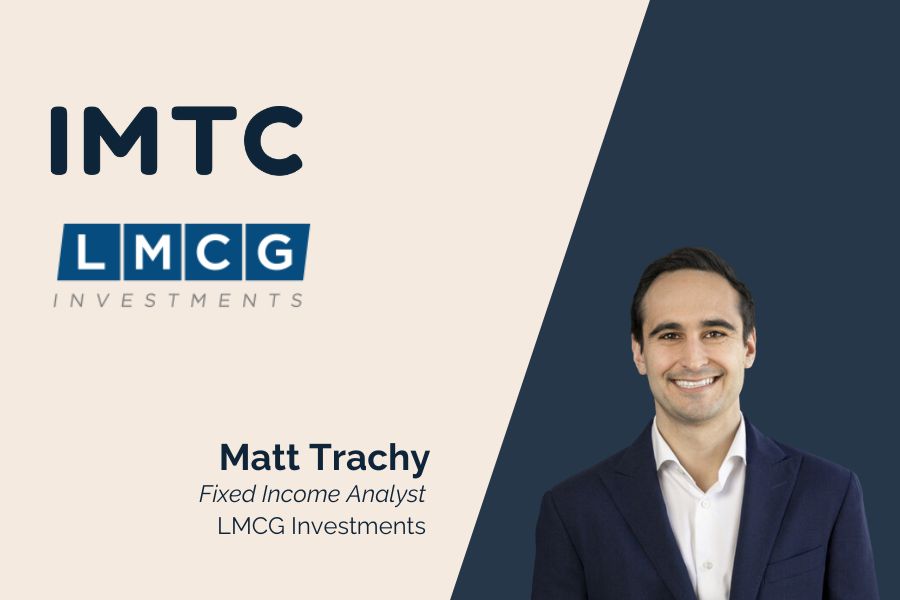Spotlight Interview: Caidong Lai on Building the Next Generation of Fixed Income Analytics

Interviewer: Will Everett
Guest: Caidong Lai, Financial Engineer at IMTC
Caidong Lai’s journey from quant specialist to Financial Engineer at IMTC shows how advanced analytics and automation are reshaping fixed income. His story highlights a future where managers can move past fragmented tools and embrace integrated, scalable solutions.
Q: Caidong, could you introduce yourself and share what drew you to IMTC?
Caidong Lai: My name is Caidong Lai, and I’m a Financial Engineer at IMTC. My role focuses on data, calculations, and strategic initiatives such as performance attribution, short analysis, and structured product functionality.
Before IMTC, I spent 10 years as a fixed income quant specialist at an asset management firm, managing both SMA and institutional portfolios. I built a proprietary fixed income analytics system during that time.
I first discovered IMTC at an online event in 2021 called Demo Day. Most systems I had seen were on-prem and static, but IMTC’s demo showed a cloud-based platform that automated portfolio workflows. It turned static analytics into actionable rebalancing decisions within seconds. I knew immediately this was the future. I joined IMTC in 2023 as the first Financial Engineer, and it’s been the best career decision I’ve made.
Q: What’s the biggest change you’ve seen in fixed income portfolio management during your career?
Caidong Lai: The biggest change is the rise of electronic trading and advanced technology, which has made active management of fixed income portfolios much more common.
Q: And what persistent challenges do asset and wealth managers still face?
Caidong Lai: From my perspective, there are three major challenges:
- Data access and maintenance – Managers spend enormous resources just gathering and cleaning data for analysis.
- Fragmented technology – Different tools and programming languages force teams into inefficient, ad hoc processes.
- Inconsistent risk analytics – Different systems use different assumptions and methodologies, leading to confusion and inefficiency.
Q: How did your past experience as a quant prepare you for solving these problems at IMTC?
Caidong Lai: As a quant, I focused on delivering accurate analytics and tools for portfolio managers and CIOs. That meant mastering bond math, risk modeling, optimization, programming, and investment workflows.
At IMTC, we’re solving the same problems but at a much larger scale. Our platform delivers analytics across millions of securities and thousands of portfolios in seconds. Tools like performance attribution, scenario analysis, and our optimizer give managers precise rebalancing decisions instantly.
Q: Can you share a story that illustrates how technology addresses old pain points?
Caidong Lai: A typical workflow—like investing excess cash—used to involve tedious trial-and-error. Managers would analyze the portfolio, identify candidate bonds, model scenarios, recheck risk guidelines, and repeat the cycle many times.
With IMTC, that same workflow is now automated. The platform instantly analyzes portfolios, runs scenarios, and ensures compliance. Even better, it does this across many portfolios at once—not just one at a time.
Q: What transformations do clients experience when they modernize with IMTC?
Caidong Lai: Three stand out:
- Confidence in data – Inputs are consistent and reconciled.
- Faster decision-making – Managers can capture market opportunities more quickly.
- Scalable active management – The platform enables oversight of thousands of portfolios at once.
Q: Looking ahead, what trends will shape fixed income tech adoption in the next five years?
Caidong Lai: Asset managers are increasingly looking for integrated portfolio management solutions. The goal is to handle growing data demands, replace outdated systems, and automate workflows end to end.
Q: Finally, what advice would you give PMs and CIOs beginning their digitization journey?
Caidong Lai: A good system should provide high-quality data, consistent risk analytics, and transparent, mathematically checkable results. Transparency builds trust—and without it, managers can’t scale confidently.
This paper is intended for information and discussion purposes only. The information contained in this publication is derived from data obtained from sources believed by IMTC to be reliable and is given in good faith, but no guarantees are made by IMTC with regard to the accuracy, completeness, or suitability of the information presented. Nothing within this paper should be relied upon as investment advice, and nothing within shall confer rights or remedies upon, you or any of your employees, creditors, holders of securities or other equity holders or any other person. Any opinions expressed reflect the current judgment of the authors of this paper and do not necessarily represent the opinion of IMTC. IMTC expressly disclaims all representations and warranties, express, implied, statutory or otherwise, whatsoever, including, but not limited to: (i) warranties of merchantability, fitness for a particular purpose, suitability, usage, title, or noninfringement; (ii) that the contents of this white paper are free from error; and (iii) that such contents will not infringe third-party rights. The information contained within this paper is the intellectual property of IMTC and any further dissemination of this paper should attribute rights to IMTC and include this disclaimer.





